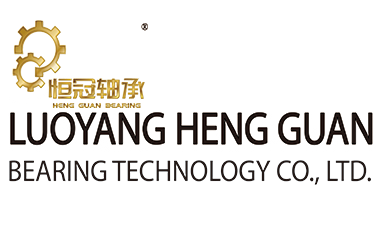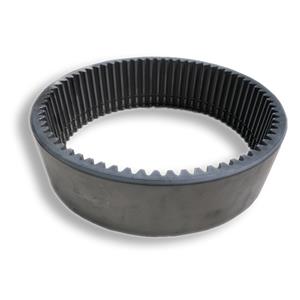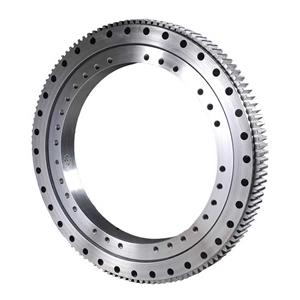Disassembly method of slewing bearing
Bearings, as a kind of mechanical conventional parts, are unavoidable with the use of equipment, so when our equipment or machines are routinely repaired or damaged, we need to disassemble the bearings, especially when the bearings are disassembled for faults, check the parts around the bearings, lubricate them. The situation of the agent and the bearing itself can be more clearly known to the fault, then the following editor of Hengguan Bearing will introduce the disassembly method of the slewing bearing to you.
1. Instructions before disassembling the slewing bearing
1. Use of dismantling tools
(1) Use manual or hydraulic
(2) Only use a special wrench
(3) Use a puller
(4) Use induction heating equipment (inner ring)
(5) Use oil injection method
2. How to disassemble
(1) It should be carried out by or under the guidance of experienced personnel;
(2) Before starting the disassembly, determine the specific method to be disassembled;
(3) Keep the necessary bearing removal tools handy;
(4) When reusing or inspecting a disassembled bearing, be careful to avoid scratching or damaging the bearing raceway or rolling elements; when disassembling the bearing from the bearing seat, the disassembly force is applied to the outer ring; when disassembling the bearing from the shaft, the disassembly force is applied to the outer ring. inner circle;
Slewing bearing
Second, the disassembly method of the slewing bearing
1. Cold disassembly
When removing smaller bearings, the bearing ring can be removed from the shaft by lightly tapping the side of the bearing ring with a suitable punch, preferably with a mechanical puller. The pull should act on the inner ring or adjacent components. Removal can be simplified if the shaft shoulder and housing shoulder have grooves to accommodate the puller grip. In addition, some threaded holes are machined at the position of the hole shoulder to facilitate the bolt to push the bearing out.
Large and medium-sized bearings often require more force than machine tools can provide. Therefore, the use of hydraulic power tools or oil injection, or both, is recommended. This means that oil holes and oil grooves need to be designed on the shaft.
2. Hot disassembly
When disassembling the inner ring of needle roller bearings or NU, NJ, and NUP cylindrical roller bearings, the hot disassembly method is suitable. Two commonly used heating tools: heating rings and adjustable induction heaters.
The heating ring is usually used to install and remove the inner ring of small and medium-sized bearings of the same size. The heating ring is made of light alloy. Heating rings are radially slotted and equipped with electrically insulating handles.
If the inner rings of different diameters are frequently disassembled, it is recommended to use a debuggable induction heater. These heaters quickly heat the inner ring without heating the shaft. When disassembling the inner ring of a large cylindrical roller bearing, some special stationary induction heaters can be used.
3. Remove the bearing installed on the conical shaft diameter
The small bearing can be removed by pulling the inner ring with a mechanical or hydraulic puller. Some pullers are equipped with spring-operated arms, and the use of this self-aligning design of the puller simplifies the procedure and avoids damage to the journal. If the puller claws cannot be used on the inner ring, the bearing should be disassembled through the outer ring or by using a puller combined with a puller.
When using the oil injection method, the disassembly of medium and large bearings will be safer and easier. This method injects hydraulic oil between two conical mating surfaces under high pressure through oil holes and oil grooves. The friction between the two surfaces is drastically reduced and an axial force is created that separates the bearing and shaft diameter.
4. Remove the bearing on the adapter sleeve
For the small bearing installed on the adapter sleeve with the straight shaft, you can use a hammer to knock the small steel block that acts evenly on the end face of the inner ring of the bearing to remove it. Before doing this, the adapter sleeve lock nut needs to be loosened a few turns. For small bearings mounted on the stepped shaft of the adapter sleeve, it can be removed by hitting the small end face of the adapter sleeve lock nut with a hammer through a special sleeve. Before doing this, the adapter sleeve lock nut needs to be loosened a few turns. For bearings mounted on a stepped shaft with an adapter sleeve, the use of a hydraulic nut makes bearing removal easier. To do this, a suitable stop must be installed close to the hydraulic nut piston. Oil injection is the easier method, but an adapter sleeve with oil holes and oil grooves must be used.
5. Remove the bearing on the withdrawal sleeve
When removing the bearing on the withdrawal sleeve, the locking device must be removed. (such as lock nuts, end plates, etc.) For small and medium-sized bearings, lock nuts, hook wrenches or impact wrenches can be used for disassembly.
For medium and large bearings installed on the withdrawal sleeve, the hydraulic nut can be used to easily disassemble. It is recommended to install a stop behind the hydraulic nut on the shaft end. The stop device can prevent the withdrawal sleeve and the hydraulic nut from flying out of the shaft when the withdrawal sleeve is suddenly separated from the mating position.
The above is the relevant content about the disassembly method of the slewing bearing. I hope it will be helpful to you. In addition, we have rich experience in the production of slewing bearings and slewing bearings. If you need it, please feel free to inquire




